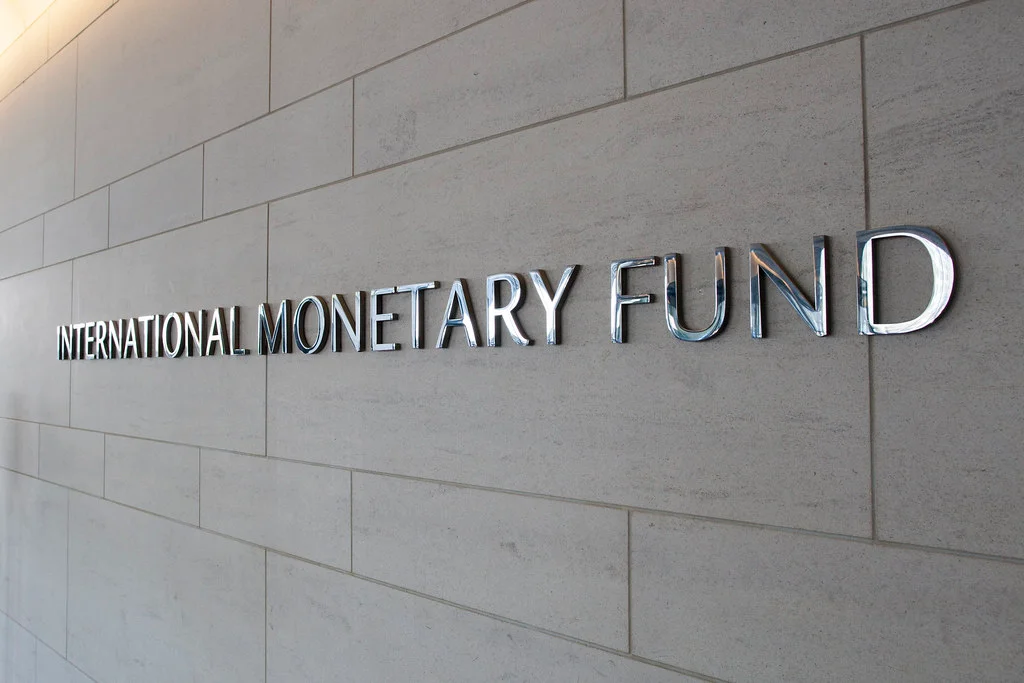Background
The historical emergence of the country, Pakistan in economic crisis, dates back to the British colonial ashes after the conclusion of the Second World War. During the British colonial era, the economical growth rate of the sub-continent was at nullity. United India used to contribute 27% to the global GDP, before the arrival of foreign powers. Therefore, since inception, the national leaders and policy makers have been infatuated with making a robust policy framework that won’t resemble their colonial masters.
Until the founder of Pakistan continued to survive, spasmodically, his views were in practical motion. Then, his ascendors commenced various economic development models such as the Ayubian model, inspired from contemporary developmentalism models of the Nehruvian model, Brazilian model etc. The aforementioned developmentalism models had one common facet; the state played an active part in building the national economy.
In the special context of Pakistan, the Ayubian economic model, despite its megalomaniac nature, galvanized the national economy. The foreign aid, transferred in exchange of Ayub’s loyalty for the US cold war mission, proved to be vital but ephemeral. The policy makers shifted their potential focus from building their own consolidated grounds to the hollow economy fuelled by foreign debt. Industries established at massive levels across the country and sold to private enterprises, most of them predilections, at low market prices.
The liberation of Bangladesh had wrecked country’s backbone, absence of US support, incredibly suggested Bhutto to plan nationalization of industrial units. Around 2600+ industrial units were rapidly nationalized and the public sector was reopened to participate in. However, the then, political leadership failed to scrutinize the impetus of the economic vicinity of Pakistan, which earlier had grounds on international aid. Although, Bhutto government turned their heads to the International Monetary Fund (IMF) for instant bailouts to survive the plight.
Developmental Polices
After examining the developmental models of third world countries, economists concluded that the state played a direct part in building the economy. None of them could hoist on pre-market economy. Similarly, the industrialization of Pakistan was purely state sponsored project.Such as Pakistan Industrial Credit and Investment Corporation (PICIC) and Pakistan Industrial Development Corporation (PIDC). Under their influence, the Green Revolution flourished, and industrial projects including Tarbela Dam were concluded with the assistance of the World Bank, boosting agricultural production at the highest level ever.
In third world nations, after the Mexican debt crisis that initiated in 1978 and got apex in 1982, the Developmentalism Model of economy began shattering. The Developmentalism Model was transformed into a new framework, promulgated by the IMF’s fresh policy package, which varies from the Ayubian and Nehruvian models of economy. The policy package has three bases; liberalization, deregulation and privatization.
Liberalization:
The liberalization framework postulates that any tariff, excise duty imposed on exports and imports must be removed completely. During the Zia period, the average tariff was 46% which, later, swooped and is now at sole 8%. And when Pakistan joined the World Trade Organization, the liberalization framework swiftly imbibed into Pakistan’s economic framework, which says Pakistan is in economic crisis.
Deregulation:
It raises concerns over the financial capital. The great depression after the Second World War, the European imposed taxes and regulatory codes on banks, they were prohibited to issue loans sans a few prescribed precautions. But after the neo-liberalism wave, they terminated all regulations. A new form of capital emerged, also called ‘Derivative markets’ or’ forward trading’. In the new finance capital, the seller would not get loss, in both cases, of hoisting or simmering of their stocks’ value.
Privatization:
In 1993, the policy of privatization was imposed in the regions of the former USSR. All the public enterprises were privatized within 90 days. The event ensued a humongous economic crisis in Russia, according to economists, it was twice as big as the Great depression.
Now in the context of third world nations, specifically Pakistan in economic crisis, they began to imitate European nations abiding by their policies of bailouts, issued by the World Bank and the IMF. Due to complete reliance on aid and loans, since the inception of the country, the governments of Pakistan never emphasized on building a proper budget scheme.
Feeling Overwhelmed? Moula Ali’s Secret Weapon for Emotional Mastery
The country’s expenses have frequently surpassed its national income, primarily due to military spending. Under various military regimes, the country was provided exhausted aid which dissipated the insidious economical fallouts ephemeral. But it opened routes for peculiar crises that let down to the emergence of potent economic fiascos.
After complete control over Afghanistan, Uncle Sam’s interests vanished in Pakistan, circumventing further aid to its minute ratio. But the spending pattern of governments never receded. Resulting in decisive economical damage in the last decade. Most of $30 to $40 billions wasted in imports of luxury goods. To fill the gap, millions of overseas Pakistanis transfer $30 billions remittances annually and the governments struggle to save $40 billions merely from exports but still Pakistan vigorously lacks $10 to $12 billions, which later on, are rescued through IMF bailout packages, loans from international banks and friendly countries.
The IMF, before releasing funds, imposes some conditions, which are effectively harsh on downtrodden masses. The foremost condition rendered is, unabated liberalization and decrement in tariffs and excise duties. They demand a free market economy and suggest free flow of dollar’s rate in the market. Secondly, they conditionally demand to raise indirect taxes on energies; gas, electricity and water, which certainly crumble the middle and poor income group.
In the contemporary crisis of the economy, IMF policies have generated short term inflation of 43% and annual inflation of 25%. The growth rate of Pakistan is 0.5%, which in real terms is a negative growth rate, because our population growth rate is 2.0%. Pakistan is experiencing stagflation.
The incumbent situation is an offshoot of the neoliberalism framework and the fundamental cause lies within the policy framework proposed by monetary institutions. The IMF framework has drastically failed to compete with even the Developmentalism model of economy. According to the late Dr. Tahir Pervaiz, in the last 30 years, the heavy industry of Pakistan has delegated, in both population employment and GDP proportion rates.
The reason why the IMF framework does not prove efficacious and ambivalently effective has multiple facets. One of them is privatization of power. In 1993 and 1995, Private Power Producer policy commenced. The Water and Power Development Authority (WAPDA) was superseded by Independent Power Producers (IPPs). The then government of Pakistan, to ameliorate the situation, issued a sovereign guarantee to IPPs. IPPs would always earn surplus profit, and it was guaranteed by the state on the pretext of taxes paid by the helpless citizens.
Forget Everything! Moula Ali’s Powerful Words Will Transform Your Self-Image (Guaranteed!)
The renegade sovereignty guaranteed under the state’s requisition, feigned to restore energy supply to the people at cheap rates, was backfired. The result is, Pakistan owes Rs 2 trillions to IPPs and the amount is paid leisurely by imposing heavy taxes and bills on down troddens. The prime reason for Pakistan not facilitating from the IMF’s policy framework is privatization of power in the 1990s.
On one hand, the elite cadres of the country that hoist demand for unreasonable luxury imports can’t rely on local goods. They, rather, render statements of stabilizing dollar’s value and increment in exports, as per Classical Economics Theory. The theory postulates that if the dollar rises, imports would be expensive and exports would increase due to the low value of rupees. But this theory is a fatal failure. According to a report issued by the state bank of Pakistan , the import intensity export is 40% in Pakistan, which is encroaching. Because major commodities that vehicle the national economy are gas, oil and diesel, that are purchased in dollars.
If energy is purchased expensively, then its by-products would certainly be expensive, making exports extravagant. High electricity costs would raise the cost of production. And in the case of Pakistan, electricity is sold at Rs 60 per unit, as compared to Bangladesh, which sells it at Rs 7 per unit. Including other imports, Rs 30 to Rs 40 billions of cotton is imported, plastics, machinery and steel etc, are prime commodities.
Solution/Remedies
To ameliorate the contemporary crisis, abundance of foreign investment is crucial. In the Nehru period, India established numerous IT centers, institutions like IIT, which produced quality engineers who are currently working as CEOs’ of big tech giants. Thus, India utilized its manpower hy hoisting the quality of education. Paradoxically, the quality of education has never progressed but vitiated as the country’s budget tilted firmly towards defense and governmental ostentation.
Another vibrant method would be to relegate its reliance warily on expensive oil and gas. The best option is the Iran-Pakistan-India (IPI) gas pipeline and Turkmenistan, Afghanistan, Pakistan and India (TAPI) pipeline. These projects would provide cheap energy in Pakistan and by forming friendly ties with neighbors, the country could, too, relax its defense expenditure.
The luxury imports must be restricted completely. The flight of national capital through unreasonable imports could be inhibited by the issuance of ‘letter of credit’, which is not against IMF policies of liberalization. Whilst, computer equipment and machinery tools should be imported increasingly, because they feed labor and the economy.
To discover an effective panacea for the vicious quagmire, Pakistan has to look itself in a historical perspective. The country won political independence against British colonial heights, which is the greatest historical advance. But imperialist powers have still subdued third world countries through financial debt. They have stopped encroaching with tanks but invade through banks. To combat the predicament, we have to take back our economic sovereignty through unanimous provisions and policies. Pakistan can grow out of an insidious trap, that further suffocates its people and progress at largess.

